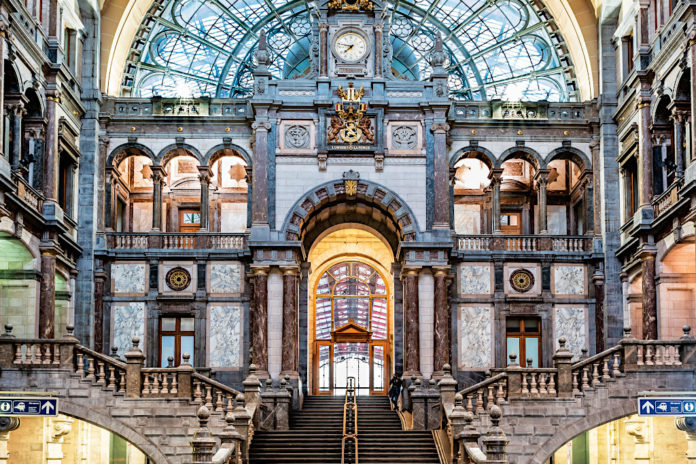Antwerp is the capital city of the Flemish region of Belgium, the second largest city after Brussels, and it’s also the second largest seaport in Europe. However, Antwerp is number one when it comes to being a city flush with a rich culture, fashion, design, and culinary experiences.
Historically, Antwerp became an important city starting in the 15th century, after the decline of the city of Bruges, when the foreign trading houses moved their businesses. Soon Antwerp was the most prosperous city in Europe, teeming with ships and wealthy shipping merchants. In its Golden Age, it also became a major financial center with moneylenders and banks supporting the shipping trade. Antwerp extended its success by becoming the sugar capital of Europe and an important port for pepper, silver, textiles, wine, and spices from Portugal and Asia.
Another significant product that Antwerp began to import in the 1500s is diamonds, and it is still a thriving trade. In recent years Antwerp has imported and exported over 30 billion euros worth of diamonds, and it specializes in the rough supplies, the polishing of high-end diamonds, and their financing.

Antwerp Central Station
Photo: Kristel Van den Broeck
In the early 1990s, suddenly and almost out of nowhere, Antwerp became a fashion capital, and the new style kid on the block after New York, London, Milan, and Paris. It all started with a group of designers who attended the prestigious Antwerp Royal Academy of Fine Arts in the 1980s, who then went on to create their own labels. They named themselves the Antwerp 6 and they included Dries Van Noten, Ann Demeulemeester, Dirk Van Saene, Walter Van Beirendonck, Dirk Bikkembergs, and Marina Yee. Although he wasn’t technically part of the Antwerp 6, Martin Margiela started his brand at the same time, and all of them together disrupted the bourgeois fashion of the time with their cutting edge and avant-garde designs, establishing Antwerp as a major player on the international fashion stage.
Our infatuation with the architecture of the city began the moment we arrived at the Antwerp Central Station. Built between 1895 and 1905, Antwerpen-Centraal is one of the best examples of the grand European train stations with its mix of glass , metal, and stone, a classic clock, and an enormous rotunda with a massive dome.
Painter Peter Paul Rubens, the most celebrated resident of Antwerp, owned a stunning palazzo, which is now a museum. After purchasing the house in 1610, Rubens did a head-to-toe renovation of the house, using his own designs, converting it into an Italian style palazzo. He lived in the house for the rest of his life, and in 1937 the city bought t he house and inaugurated it into the Rubenshuis museum (Wapper 9-11. Tel: +32- 3201- 1555. www.rubenshuis.be) in 1946. The museum not only houses an impressive collection of Ruben’s paintings and drawings, including a rare self-portrait, it also exhibits other artists’ works from the same era. There’s also period furniture and Ruben’s studio in the house, and remember to stroll through the beautiful Italian style courtyard garden.
Another 16th century Flemish architectural treasure is the Museum Plantin Moretus (Vrijdagmarkt 22-23. Tel : +32- 3221-1450. www.museumplantinmoretus.be), the former home and workshop of the distinguished Plantin and Moretus publishing family. Designated as an official UNESCO Heritage site in 2005, the handsome building, designed in stone and brick, contains a collection of the oldest printing presses in the world, thousands of rare books, and a fine art gallery.

Belgian Chocolates at The Chocolate Line
Photo: Jiri Hera
In between our museum visits, we had to have a chocolate fix, since Belgium is famous for its delectable and delicious chocolate. The Chocolate Line (Meir 50. Tel : +32-3206-2030. www.thechocolateline.be/en/p/locations) is a fabulous chocolate shop housed in Paleis op de Meir, an 18th century palace once inhabited by Napoleon. As we were trying to narrow down our flavor choices, we were pleasantly distracted by the opulent hand-painted murals and frescoes, gold rococo moldings, and marble statues. We finally settled on three exotic creations by chocolatier Dominique Persoone: dark chocolate infused with Tabasco, sake, and wasabi.








